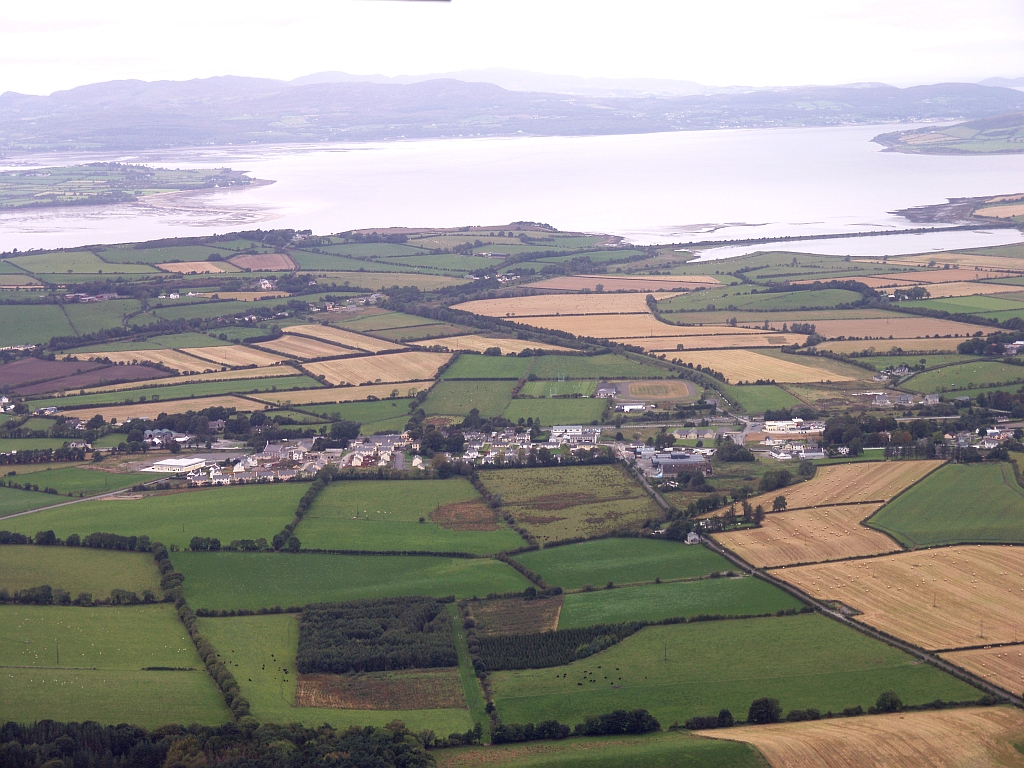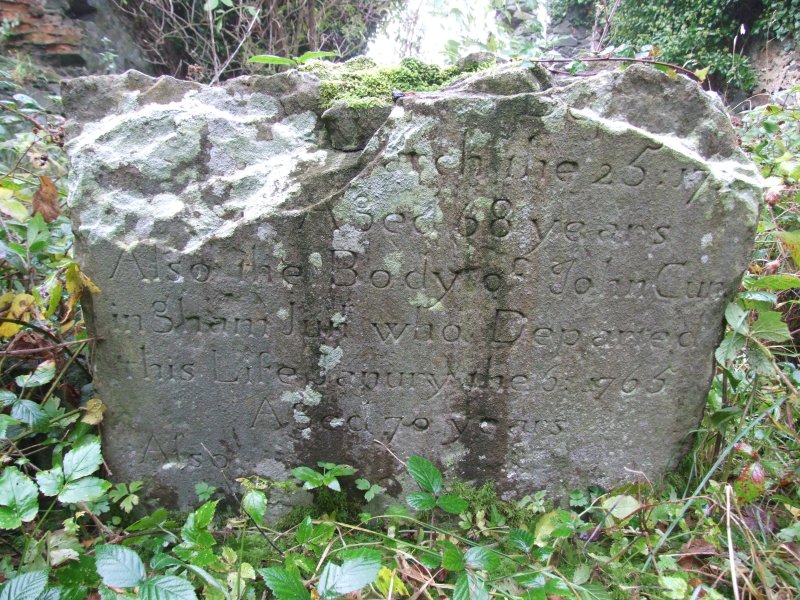
Part 2
John Cunningham’s 1,000 acres were close by and a little to the north along the shore of Lough Swilly in the lands known as Burt. It was he who established New Town Cunningham and named it in keeping with a fashion of the time which saw the establishment of the modern towns of NewtownStewart, NewtownButler and others. There was at one time a permanent garrison at Burt Castle, a local land mark, and of the two settlements this is the one that prospered most in times to come. It is not obvious why but I would speculate that its proximity to the large town and port of Londonderry gave it the competitive edge over its similarly named sibling.
In the view here the old settlement area is at the lower end of the village on the left. The further up the hill, the newer the buildings. In the background is the Lough Swilly and there is a small pier there to facilitate local fishermen and others. The sea wall at Blanket Nook protects the flat drained land there from the higher tides and provides many acres of high quality farm land. The lake is a wildfowl sanctuary and a popular local place to walk, fish or just relax.

This is the grave of John Cunningham in the local graveyard.

Sadly it has been vandalised. This photograph was sent to me by Mick Bourke who thought I would be interested, I certainly was! On the next page I have reproduced the text of an article that he wrote for a local newspaper. In it he mentions the vandalising of this memory of the past.
In 1629 the settlements were well established and local commerce had started. The king in that year granted ‘patents’ to both places for the right to hold a local market and fairs. ManorCunningham held markets on Thursdays and had two fair days in June and two in October. NewtownCunningham had markets on Mondays and a three day fair starting on St Lukes Day (18th Oct) each year.
Some time after the establishment of the Scots settlements the colonists petitioned the Church in Scotland to provide clergy to look after the needs of the growing number of Presbyterians in the area. In 1628 the first Presbyterian minister in the Irish North West was appointed and established a church near what is now Carrigans and not very far from NewtownCunningham. The Ministers name was Robert Cunningham.
There must have been many others of the Cunningham clan taking tenancies, for in the early 1650s a number were expelled from their land by the Parliamentary forces on the orders of Oliver Cromwell. These were people who had sided with the Royalist cause in the Civil War and had in one way or other given support to the Irish supporters of the Crown. Many of the areas Irish leaders also lost their lands at the same time and for the same reason. Not all the Cunninghams were Royalists as at least one was an officer in Cromwell's army. Those Cunninghams that remained in place apparently prospered as their names crop up in accounts of commerce and civic affairs. A Colonel Cunningham was in command of troops at the time of the Siege of Derry (1688/9) though how big his role was seems uncertain. What is not in doubt is that of the thirteen apprentice boys who shut the city gates in the faces of the advancing Jacobite soldiers two were named Alexander Cunningham and John Cunningham.
Over the years the Cunninghams became an influential clan in the area being landowners or substantial tenant farmers. While not a politically powerful group they were regarded as solidly respectable and acceptable in all circles of society. This general acceptability led to the adoption of the Cunningham name by some of the Irish in the area. According to the heritage and genealogy centre in the city these were members of two well known Irish Septs (similar to the Scottish clan) in the area, the McCunnigan’s of County Donegal and the Conaghan’s of County Derry. The Irish Cunningham’s are now scattered across the world but there is no doubt about their common heritage.